What is the Coronation Roll?
Coronation Rolls are a recording of the Coronation proceedings, and have been drawn up since the original Roll was created for the Coronation of Edward II and Queen Isabella in 1308. This was in order to codify the order of ceremonial, to record who was allocated a role at the ceremony (often in return for a position or grant of land, hence the coronation “Claims” to perform services) and a record of attendance, traditionally to show who had pledged loyalty to the new monarch. The National Archives hold the majority of Coronation Rolls. However, there are no Rolls in existence for Edward III, Henry VI, Edward IV, Richard III, Henry VII, Henry VIII, Edward VI, Mary I, Elizabeth I and Charles I. The only subsequent omission is for George III.
Coronation Rolls are drawn up by the Clerk of the Crown, initially in the mediaeval period by a senior clerk of the Chancery (the Royal Secretariat of the time). Many Rolls include the monarch’s oath to govern according to the customs and laws of the realm, and detail the ceremonial of the Coronation – the prayers, the masses, the blessings, the order of service, etc.
All the post-medieval Rolls have in common a recital of claims made (until George II’s reign in Law French) to perform services at coronations, and adjudications made on these claims by a Court of Claims set up ad-hoc to examine them. Most claimants are entitled by hereditary title, personal or tenurial. It is believed that they were stored in the Tower of London together, before being moved to the then Public Record Office sometime in the 19th Century.
The language of the Rolls is often a blend of those languages of record current at the period: mediaeval and early modern period Rolls (1308-1727) are in Latin and French, with English from the Seventeenth century thereafter.
Learn more
Learn more about the history of the Coronation Roll from historians at The National Archives.
© BBC, ITN and Sky UK
The Coronation Roll was assembled by the firm of Shepherds, Sangorski & Sutcliffe. Watch this video to find out more about how they assembled this unique document.
© BBC, ITN and Sky UK
The Role of the Monarchy in the UK
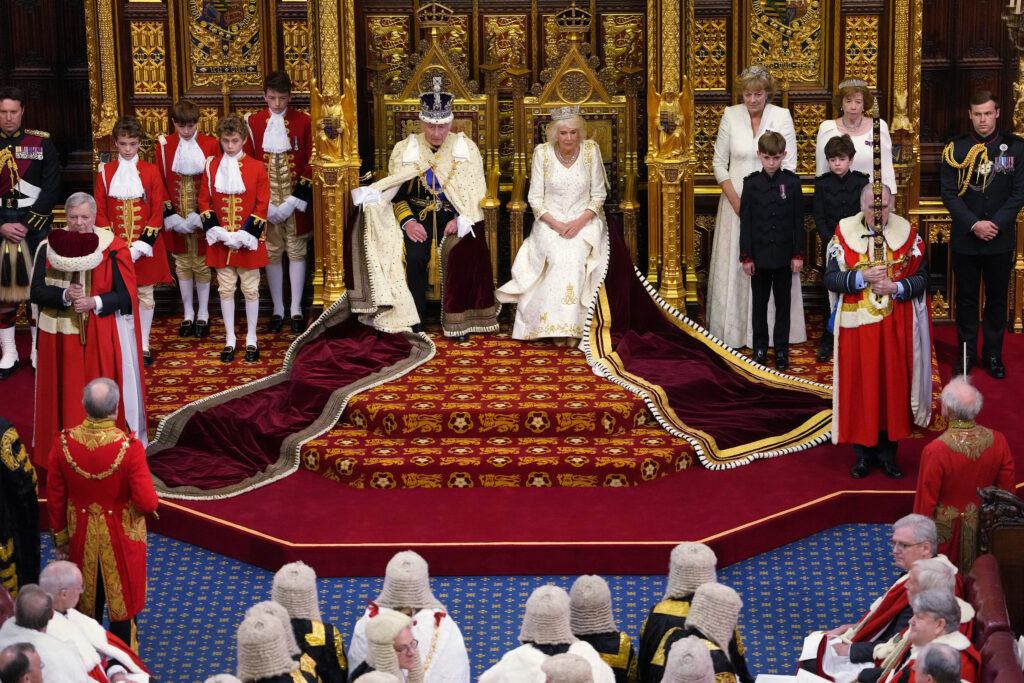
The UK is a constitutional monarchy. The monarch — or Sovereign — has a number of constitutional and ceremonial duties. The Sovereign is the Head of State, the Head of the Armed Forces, the Supreme Governor of the Church of England, and the fount of honour. The King is also Head of the Commonwealth. The Sovereign appoints the Prime Minister and other ministers, and many of the Government’s powers derive from those of the Sovereign.
Ceremonial and constitutional duties
Much of the uncodified constitution of the United Kingdom flows from the authority of the Crown, including in relation to Parliament, government, the judiciary, devolved and local government. The Sovereign receives and acts on Advice from the elected Government of the day.
- The Crown forms an integral part of the UK Parliament. Known formally as the “Crown-in-Parliament”, it comprises the monarch, the House of Commons and the House of Lords.
- In law, the Crown remains the source of executive authority in the United Kingdom, although most decisions are now taken by other bodies independent of the monarch, in particular government ministers.
- The Crown remains “fountain of justice”. All prosecutions are done in the name of the Sovereign. Judges derive their authority from the Sovereign. When a sentence is passed, the Sovereign alone can revoke the punishment.
- Members of the Scottish and Welsh Parliaments are required to swear the oath of allegiance or make a solemn affirmation before they can take their seats.
- Elected councils across the United Kingdom also use ceremonial maces, which denote Royal authority.
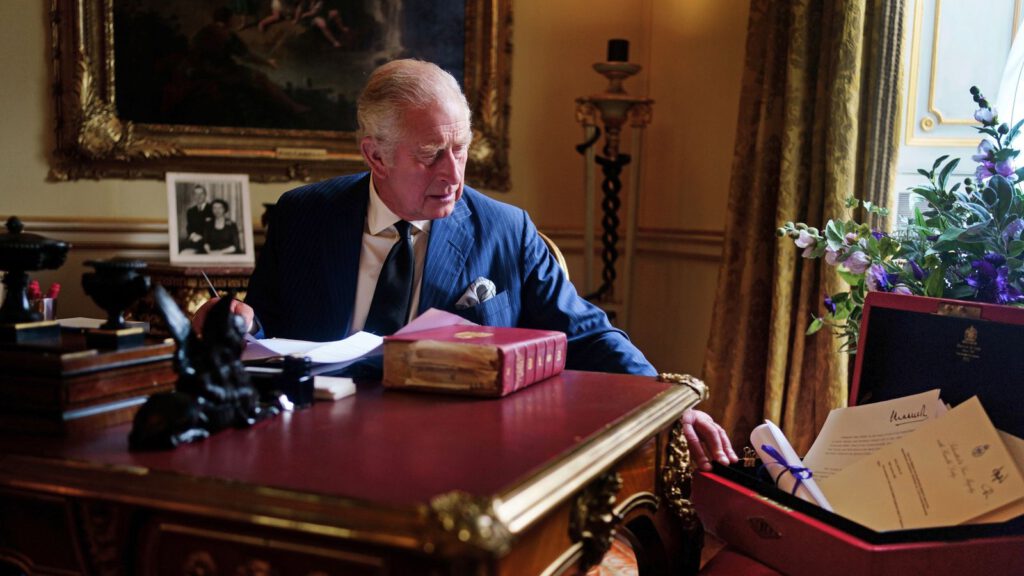
The Sovereign fulfils a number of ceremonial and constitutional duties.
- The Sovereign appoints the Prime Minister and other ministers.
- The Sovereign dissolves Parliament following a request from the Prime Minister which leads to a general election.
- At the same time as the dissolution of Parliament, the Sovereign calls a new Parliament by proclamation.
- The Sovereign opens each new session of Parliament, usually in person, and brings each session to an end.
- A bill which has been approved by Parliament and completed all of its prior parliamentary stages becomes law when Royal Assent (the formal approval of the Sovereign) is signified to both Houses of Parliament.
The Sovereign appoints the First Minister of Scotland and the First Minister of Wales.
The Sovereign is Head of the Armed Forces. Armed Forces recruits are required to swear an oath of allegiance to the Sovereign (or make a solemn affirmation to the same effect).
The Sovereign is the ‘fount of honour’, which means that all UK honours are bestowed or annulled by the Sovereign, mainly on the advice of the Prime Minister. Some honours are in the direct gift of the Sovereign and are conferred without government advice. The Sovereign is solely responsible for honours awarded in four Orders of Chivalry that are in current use: the Order of the Garter, the Order of the Thistle, the Order of Merit and the Royal Victorian Order.
As Head of State of the UK, the Sovereign undertakes and hosts state visits, helping to build and maintain relations with other nations.
On a daily basis, the Sovereign receives dispatches from the government in a red leather box. These will include the agenda and minutes of Cabinet meetings (and its committee), copies of all important Foreign Office telegrams and dispatches, a daily account of parliamentary proceedings and weekly summaries from the Governors-General of the Commonwealth Realms and documents which require a signature. The Prime Minister normally meets the Sovereign on a Wednesday at Buckingham Palace. These meetings are completely private, and no official records are kept of what is said.
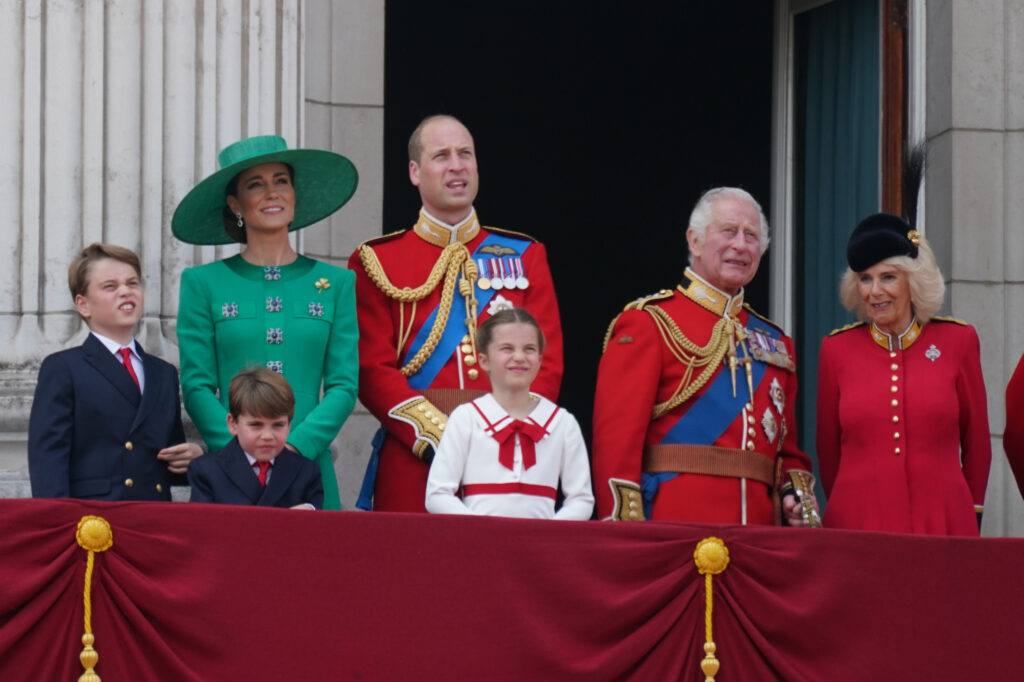
The Sovereign is not only the Head of State, he or she is a personal symbol of national unity. Ceremonial activities are closely associated with the Sovereign, many of which still take place. Royal marriages and funerals, for example, are major ceremonial events. Royal processions play an important role, for example, at the State Opening of Parliament and the arrival of visiting heads of state.
The Sovereign’s birthday is officially celebrated every June by the ceremony of Trooping the Colour on Horse Guards Parade.
Demise and succession
The succession to the Crown is automatic; on the death of the Sovereign the heir succeeds without any further ceremony (summed in the phrase “The Queen is dead; long live The King!”). Consequently, a new Monarch begins his or her reign without being formally crowned and is entitled to exercise his or her Royal powers and prerogatives. This immediate transfer of Royal powers and prerogatives is referred to as the Demise of the Crown.
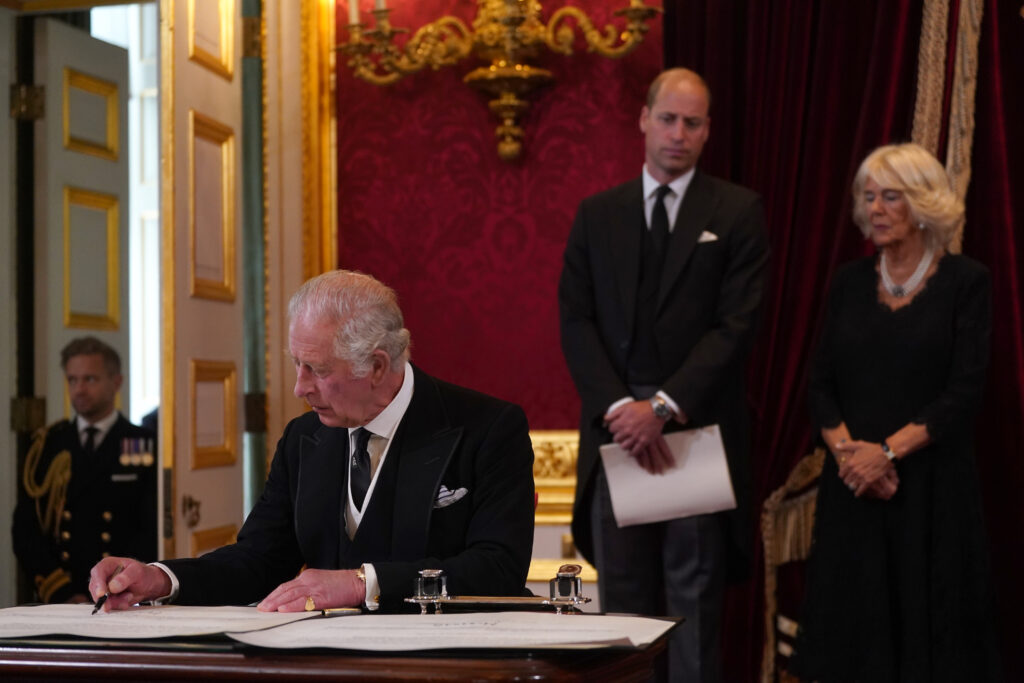
Succession to the Crown, whilst hereditary, is also regulated by Parliament. Subject to certain statutory limitations, the line of succession runs through the eldest child of the Sovereign. The line of succession has been altered by legislation.
The English Act of Settlement 1700 laid down that only Protestant descendants of Princess Sophia (Electress of Hanover, granddaughter of King James I) are eligible to succeed. This was confirmed by the Union of Scotland Act 1707. Subsequent Acts of Parliament have confirmed this, and under the Statute of Westminster 1931, the succession can only be altered by the common consent of all the countries of the Commonwealth of which The King is Sovereign. An example of this was the Succession to the Crown Act 2013 which altered the line of succession so that the eldest child of the Sovereign, regardless of gender, precedes any siblings.
The current line of succession is The Prince of Wales — who is heir to the Throne — followed by his children, Prince George of Wales, Princess Charlotte of Wales and Prince Louis of Wales.
The new Sovereign is proclaimed at an Accession Council to which members of the Privy Council are summoned.
The wife of a male monarch automatically becomes Queen upon the death of the previous sovereign. The husband of a new Queen, on the other hand, is not automatically granted a title, although one can be conferred at a later date. The Duke of Edinburgh, for example, was made a Prince of the United Kingdom by Letters Patent in February 1957, while Prince Albert was styled “Prince Consort” in 1857, 20 years after Queen Victoria’s accession.
As heir to the Throne, The Prince of Wales possesses few constitutional powers, although receives Cabinet papers and can grant audiences to ministers. Under a 1469 Act of the Parliament of Scotland, the heir to the Scottish (and subsequently UK) Crown is also Duke of Rothesay, Earl of Carrick and Baron of Renfrew, Lord of the Isles and Prince and Great Steward of Scotland.
The Royal Prerogative
Prerogative powers are residual discretionary powers vested in the Crown which are recognised under the common law. Although the scope of the Royal Prerogative has evolved over time, prerogative powers continue to apply in a wide range of areas. Originally, they would only have been exercised by the reigning Sovereign. Now, the bulk of the prerogative powers are exercised by or on behalf of ministers, and particularly the Prime Minister.
The Privy Council
The Privy Council (or, if the monarch is present, “His Majesty in Council”) is an advisory body to the Crown and its members are known as Privy Counsellors. It is one of the oldest parts of the UK’s constitutional arrangements, with origins dating back to at least the 13th century. In addition to Cabinet ministers, other government ministers, opposition party leaders, senior judges and some figures from Commonwealth Realms are also Privy Counsellors.
The Privy Council advises the Sovereign on the exercise of certain prerogative powers and other functions assigned to the Sovereign and to the Council by Acts of Parliament.
This includes:
- Orders for the Prorogation of Parliament
- Orders signifying approval or rejection of petitions or legislation of the Crown Dependencies
- Orders granting or amending Royal Charters
- Orders dealing with certain matters concerning the Overseas Territories
- Orders made under legislation are also used to enable an Act of Parliament, or any of its provisions, to be extended to apply to the Crown Dependencies or Overseas Territories.
- Proclamations issued to dissolve one Parliament and call another are approved in Council. His Majesty in Council also gives approval to statutory Proclamations for new coinage and for certain bank holidays.
The Established Church
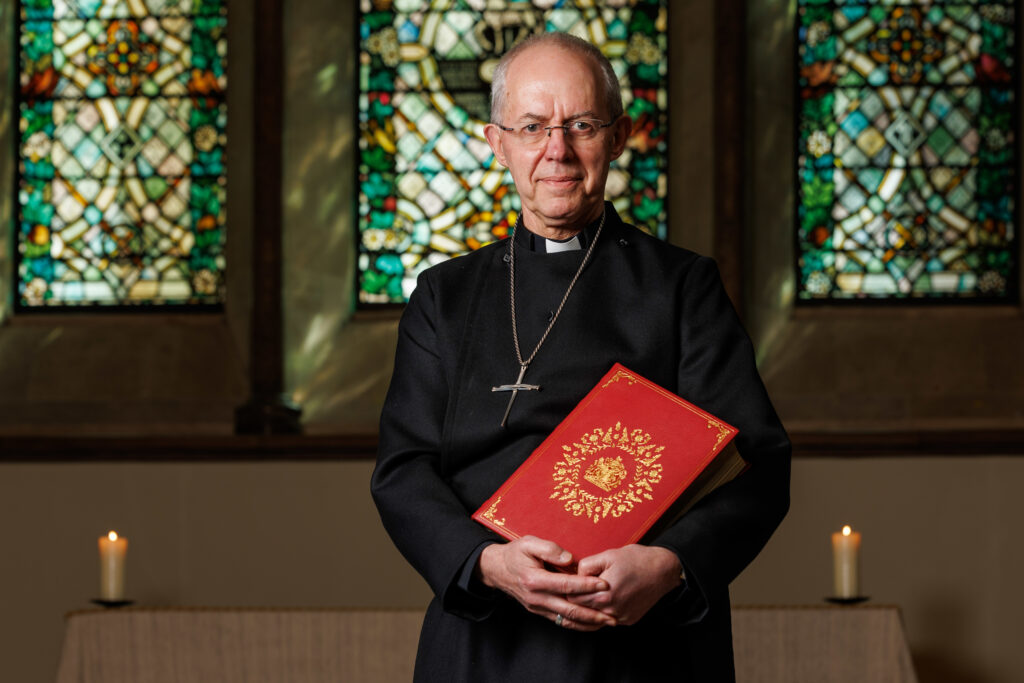
The Sovereign is the Supreme Governor of the Church of England and is responsible for a range of ecclesiastical appointments. Appointments are approved by the Sovereign on the recommendation of the Prime Minister or by the Lord Chancellor on the Sovereign’s behalf.
The Church of Scotland is the national church in Scotland. It has a Presbyterian system of church government and is entirely self-governing, requiring no Parliamentary oversight. The Church of Scotland Act 1921 guaranteed its spiritual independence. While the Church in Scotland is also an established church, the Sovereign is an ordinary member, rather than being the Supreme Governor as they are in the Church of England.
International role of the Sovereign
The Sovereign is also Head of State of a number of other Commonwealth countries, which are often referred to as ‘Realms’ – independent sovereign states which have decided to retain the British Monarch as Head of State. These are Antigua and Barbuda, Australia, The Bahamas, Belize, Canada, Grenada, Jamaica, New Zealand, Papua New Guinea, Saint Kitts and Nevis, Saint Lucia, Saint Vincent and the Grenadines, Solomon Islands, and Tuvalu. The Realms are a key part of the Sovereign’s coronation ceremony. Representatives from the Realms attend the ceremony and take part in the procession into Westminster Abbey. The Realms also form part of the Sovereign’s Coronation Oath.
The King is Head of the Commonwealth, a voluntary association of 56 countries. The role plays an important symbolic role on behalf of the Commonwealth family.
Crown Dependencies and Overseas Territories
The UK, the Overseas Territories and the Crown Dependencies form one undivided Realm, which is distinct from the other states where The King is Monarch. The Crown Dependencies are the Bailiwick of Jersey, the Bailiwick of Guernsey and the Isle of Man. There are also 14 Overseas Territories for which the UK is responsible and, whilst each is a separate jurisdiction from the UK, The King is Head of State in each territory. These are: Anguilla; Bermuda; British Antarctic Territory; British Indian Ocean Territory; Cayman Islands; Falkland Islands; Gibraltar; Montserrat; Pitcairn, Henderson, Ducie & Oeno Islands (commonly known as the Pitcairn Islands); Saint Helena, Ascension and Tristan da Cunha; South Georgia & the South Sandwich Islands; Turks & Caicos Islands; and Virgin Islands (commonly known as the British Virgin Islands).
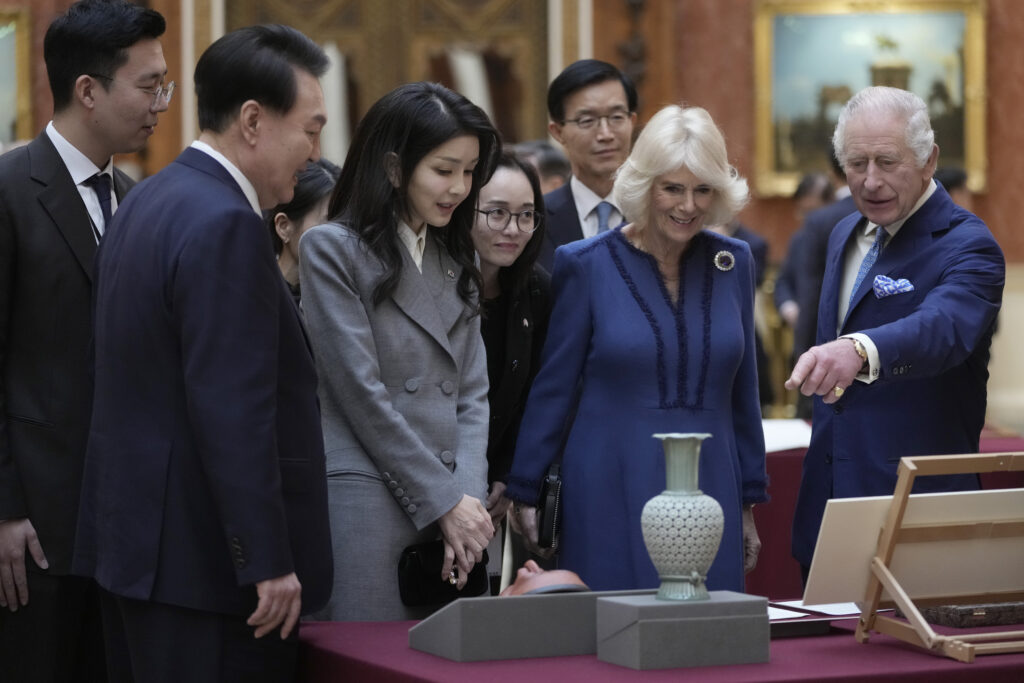
Coronation
The coronation ceremony has essentially remained the same over a thousand years, although details have changed to match the customs of the time.
Some sort of coronation ceremony involving the act of anointing a monarch with holy oil can be traced back to the 7th and 8th centuries. In England, the main elements of a coronation service can be traced to the ceremony devised by Saint Dunstan for King Edgar’s crowning at Bath Abbey in 973. This included the earliest form of an oath — an oral contract between a monarch and their people. At this time, there was no immediate (or indeed automatic) right of succession, and so a coronation was an essential rite of passage.
The first English coronation to take place at Westminster Abbey was that of William the Conqueror in 1066.
In around 1382, the Liber Regalis (or Royal Book, a highly decorated manuscript) was created as a guide to organising a coronation. Details of coronations have changed over the years, but the basic running order of the coronation ceremony remains the same, as explained in the Liber Regalis.
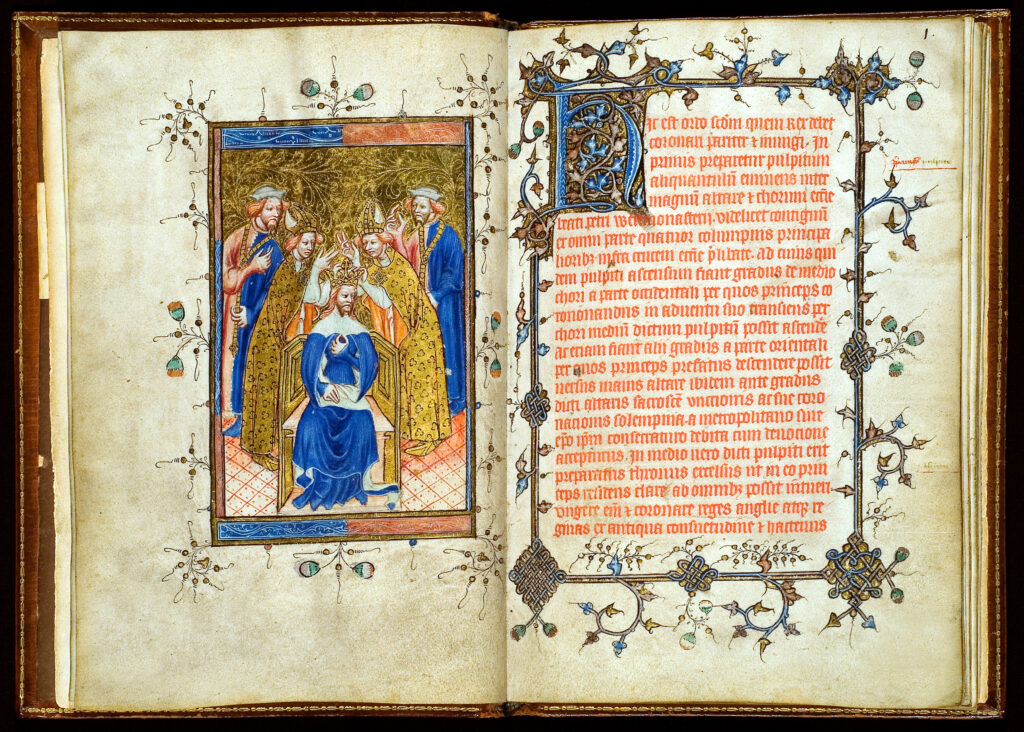
Following the “Glorious Revolution” of 1688, the Parliament of England formally limited the authority of their new sovereigns, William III and Mary II. The preamble to the Coronation Oath Act 1689 noted that “by the Law and Ancient Usage of this Realm” (England), monarchs had taken a solemn oath at their coronation to maintain the laws and customs of England and its people. However, this oath was “framed in doubtful Words and Expressions with relation to ancient Laws and Constitutions at this time unknown”.
The Act sought to rectify this by providing for a single uniform coronation oath to be taken by William and Mary and all future monarchs. It differed from earlier oaths in binding a monarch to rule according to laws as agreed in Parliament.
With the 1707 Union, the (English) Coronation Oath Act 1689 extended to Scotland as part of the new Kingdom of Great Britain. Thereafter, there would only be one statutory Coronation Oath for British monarchs.
Nowadays, the coronation ceremony usually takes place some time after the Sovereign has succeeded to the throne. This does not affect the legal powers of the Crown; King Edward VIII, for instance, was never crowned but reigned for nearly a year in 1936.
A coronation service is made up of different sections:
The monarch is presented to the people (the Recognition), where they are presented to the four corners of the Abbey as their undoubted Sovereign, and the congregation are invited to acclaim them.
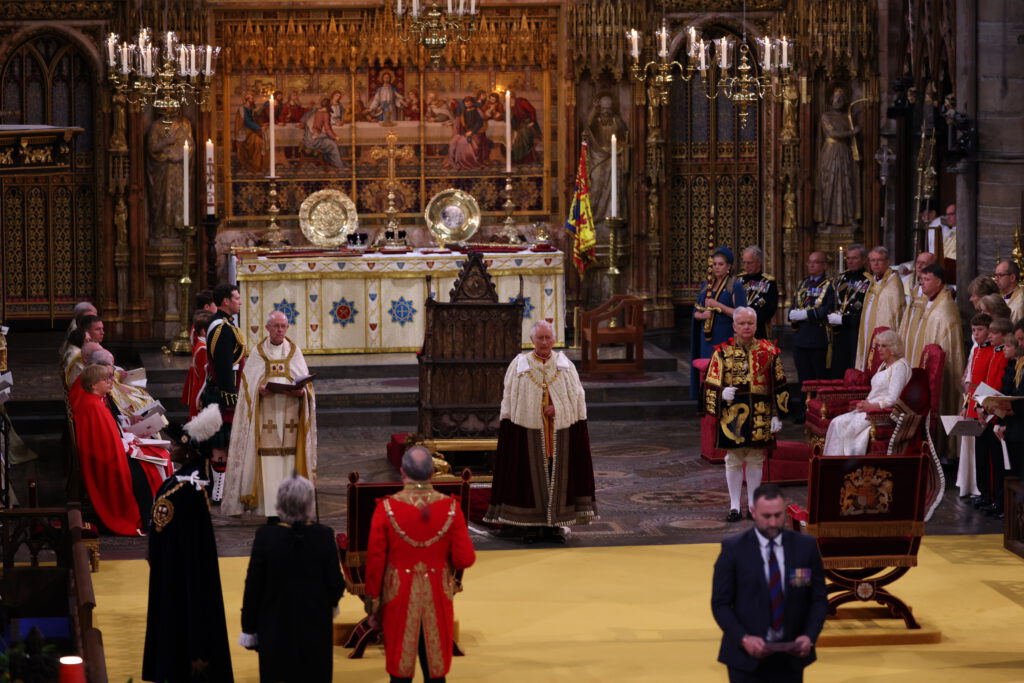
They then make promises to their subjects and God (the Oaths), the most important Constitutional element of the ceremony.
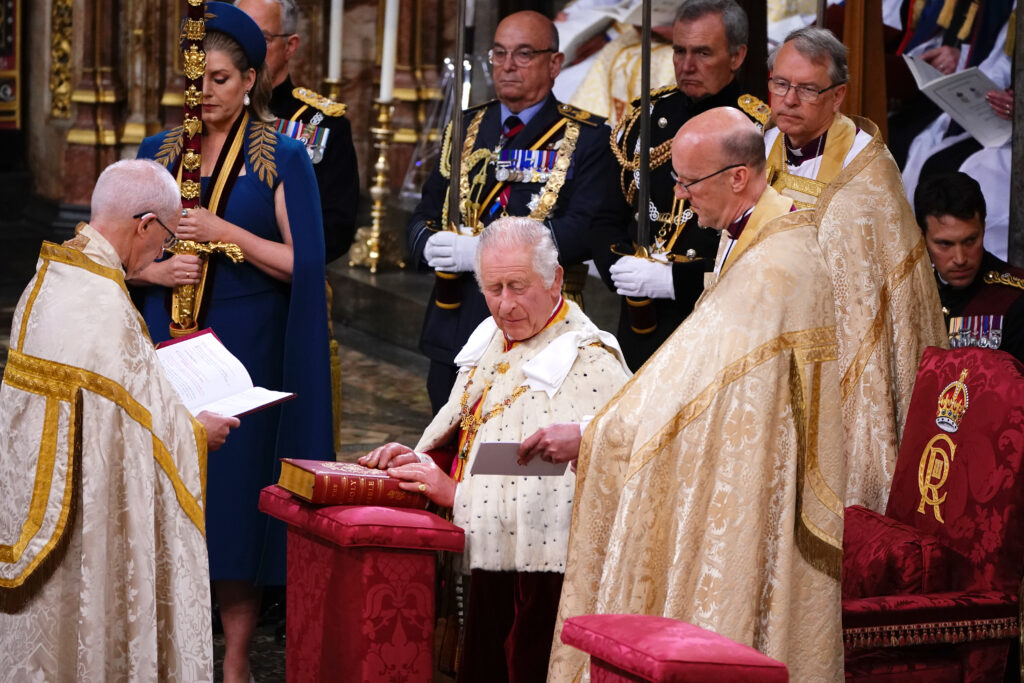
At the ceremony, the Sovereign is required to take the Coronation Oath. Under the current form of the Coronation Oath, the Sovereign is asked: first, to swear to govern the people of the UK, the other Realms, and the Territories of the UK or the other Realms, according to their respective laws and customs; second, to cause law and justice, in mercy, to be executed in all the Sovereign’s judgements; and third, to maintain the laws of God, the true profession of the Gospel and in the UK the Protestant Reformed Religion established by law; and to preserve the Church of England and all the rights and privileges of the bishops and clergy of England and the churches committed to their charge.
If there has not been a State Opening of Parliament before the Coronation then the Accession Declaration — which differs from the non-statutory, personal Declaration made at the Accession Council — also needs to be made at the Coronation. When taking the Accession Declaration, the Sovereign declares that he or she is a faithful Protestant and will secure the Protestant succession.
Next, the monarch is blessed with holy oil (the Anointing) before God, in the most religious element of the ceremony, usually taking place behind a screen or under a canopy. The Archbishop of Canterbury anoints head, breast and hands of the monarch, who has been divested of the robes of state and dressed simply.
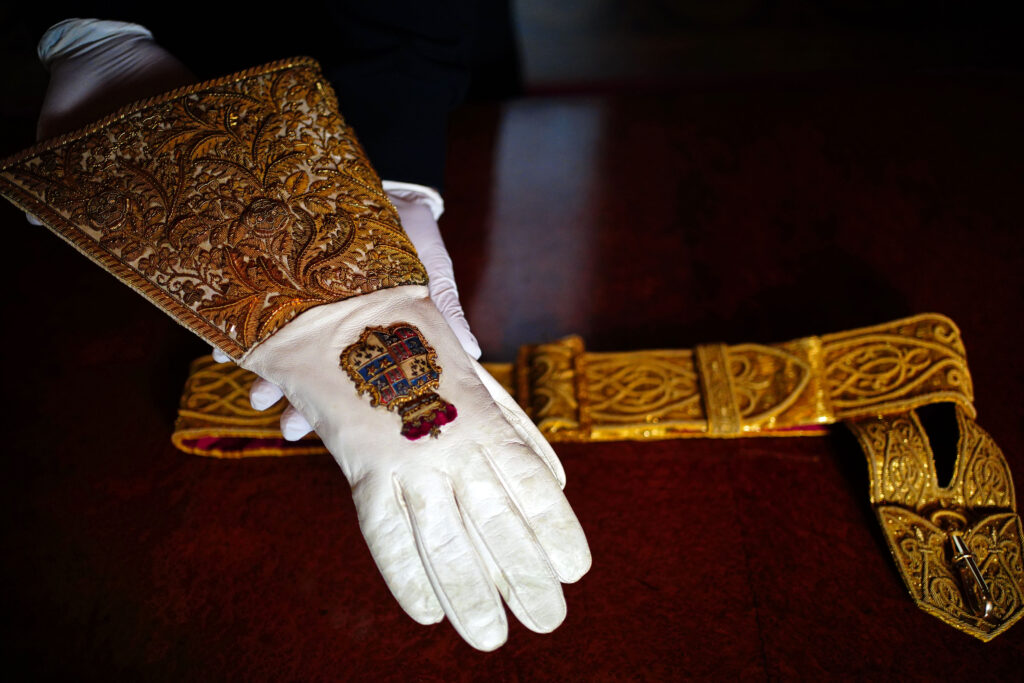
Next they receive the Royal regalia (the Investing) including
- spurs, that signify military honour and chivalry;
- a sword of offering symbolising justice and mercy;
- a pair of armills or bracelets symbolising sincerity and wisdom;
- a Robe Royal of Righteousness and Salvation;
- an orb representing the Christian world;
- a Coronation Ring representing the covenant between God, King and people;
- a glove, representing the exercise of authority with gentleness; and
- sceptres representing kingly power and justice, and equity and mercy.
The monarch is then finally crowned. They then move to their throne to take possession of their kingdom (the enthroning), including receiving homage. If there is a Queen Consort, her smaller coronation takes place, including anointing, investing of regalia, crowning and enthroning.